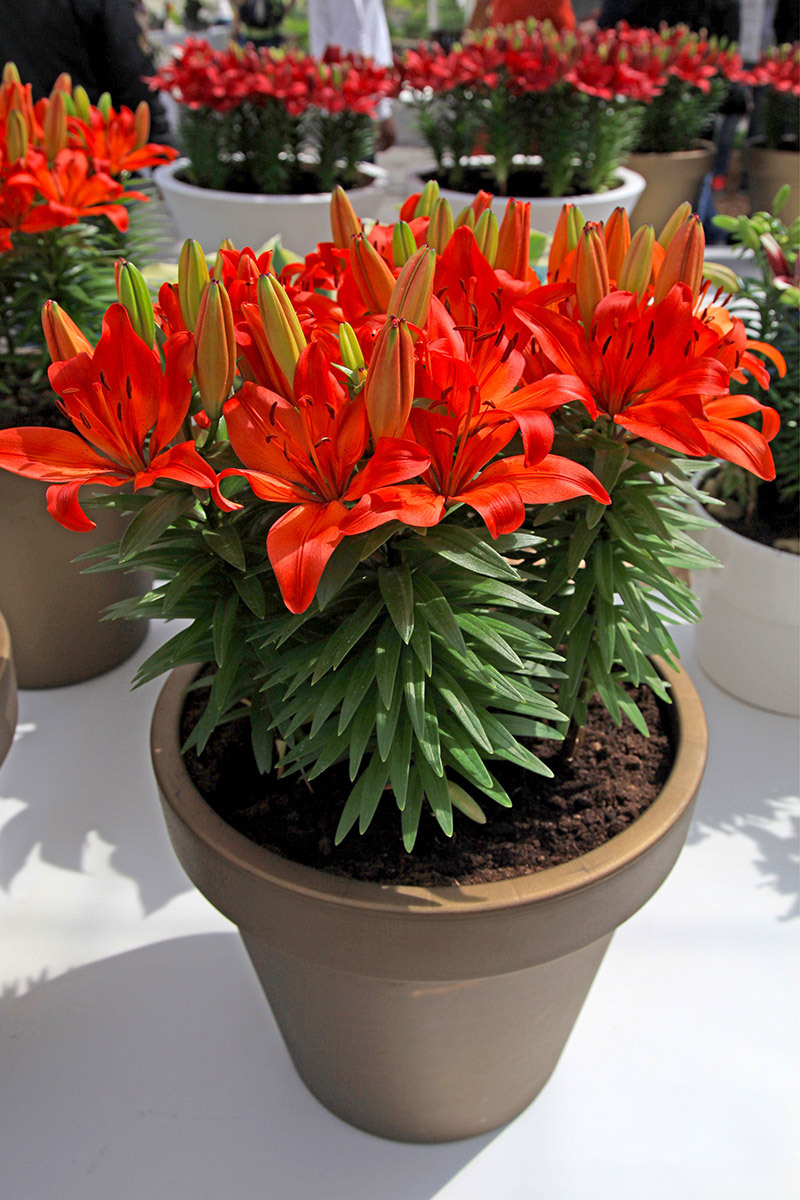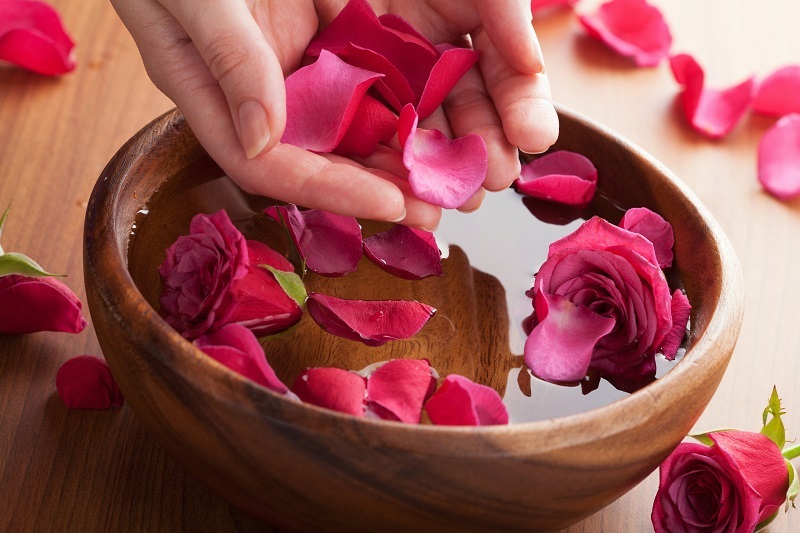Get the Most Out of Your Poinsettias This Season
Posted on 21/08/2025
Get the Most Out of Your Poinsettias This Season: Comprehensive Guide
Poinsettias--those vibrant, festive plants synonymous with winter cheer--can be found brightening up homes, offices, and celebrations across the globe each holiday season. But are you making the most out of your poinsettias this year? Whether you're new to these beloved plants or a seasoned poinsettia enthusiast, understanding the ins and outs of poinsettia care, selection, decorating tips, and year-round maintenance can help you enjoy their beauty for much longer than just a few weeks.
Understanding the Poinsettia: More Than a Holiday Flower
Native to Mexico, the poinsettia (Euphorbia pulcherrima) is known for its eye-catching bracts--those colorful leaves mistakenly identified as flower petals. Available in classic red and an array of modern hues like white, pink, and variegated styles, poinsettias lend a dose of festive color wherever they're displayed. But did you know proper poinsettia care can help these plants thrive well beyond December?
- Botanical Name: Euphorbia pulcherrima
- Common Names: Christmas Star, Mexican Flame Leaf
- Origin: Mexico and Central America
- Main Bloom Season: Winter, specifically late November to January

How to Choose the Best Poinsettias for Maximum Impact
To truly get the most out of your poinsettia this season, selection starts at the nursery or garden center. Follow these tips to pick the healthiest, most attractive specimens:
1. Inspect the Color and Bracts
- Select vibrant, boldly colored bracts with no green edges--these indicate peak maturity.
- The true flowers are the small, yellow buds in the center. Avoid plants whose buds are open or shedding pollen; they're past their peak.
2. Check for Plant Health
- Leaves should look lush, with no signs of wilting, browning, or curling.
- Examine the stem; it should be sturdy and not shriveled.
3. Avoid Exposure Stress
- Choose plants displayed inside the store, away from cold drafts or heat sources.
- Avoid specimens set near doors where cold breezes might damage foliage.
Following these guidelines ensures you get a robust and long-lasting poinsettia for your holiday display.
Best Practices for Displaying Poinsettias
Where and how you display your poinsettia plays a significant role in its health and longevity. Here's how to create an arrangement that's both stunning and sustainable:
Ideal Lighting Conditions
- Poinsettias love bright filtered sunlight. A spot near a sunny window, but protected from direct sun, is ideal.
- Too much direct light may scorch the leaves, while too little light can lead to leaf drop.
Room Temperature
- Poinsettias thrive between 60-70?F during the day and no lower than 55?F at night.
- Avoid placing them near heat sources like radiators or cold, drafty windows.
Humidity Considerations
- Moderate humidity helps keep poinsettias perky.
- If your home is particularly dry, consider placing the pot on a tray filled with pebbles and water to boost humidity levels.
Pro-tip: Remove any foil wrappers or decorative sleeves from the bottom of your poinsettia pot, or at least poke holes in them to allow for adequate drainage and air circulation.
How to Care for Your Poinsettia and Prolong Its Beauty
Proper poinsettia care is crucial for keeping your festive plant looking lush and vibrant all season long--and beyond. Here's how to take care of your poinsettias effectively:
1. Watering Wisely
- Check soil moisture daily. Water thoroughly when the top inch feels dry.
- Never let your poinsettia sit in standing water! Empty saucers promptly after watering.
- Overwatering is a common killer--yellow leaves and root rot are telltale signs.
2. Feeding Your Plant
- If you keep your poinsettia past the holidays, start feeding it in late winter with a balanced, all-purpose houseplant fertilizer every two to four weeks.
- Do not fertilize when the plant is in bloom during the holidays.
3. Pruning and Pinching
- After the holidays, cut back stems to about 4-6 inches above soil to encourage new, bushier growth.
- Regular pinching of new shoots (when they reach about 6 inches) over spring and summer promotes fullness.
4. Repotting
- If your poinsettia outgrows its container, transplant it during late spring when roots fill the pot.
- Use well-draining, light potting mix for best results.
Common Problems and Solutions with Poinsettias
Even the most attentive caretakers can run into problems. Here's how to recognize and solve the most common issues to get the most from your poinsettia plant:
- Leaf Drop: Usually caused by sudden temperature changes or drafts. Keep the plant in a stable environment.
- Yellow Leaves: Often a sign of overwatering. Let the soil dry slightly between watering.
- Dull or Faded Bracts: Results from insufficient light; move your plant to a brighter spot.
- Pest Infestation: Whitefly and aphid infestations are rare but possible. Treat promptly with insecticidal soap.
Addressing these issues promptly can significantly extend your poinsettia's show-stopping appearance.
Poinsettia Safety: Pets, Kids, and You
There's an enduring myth that poinsettias are deadly to pets and children. While the plant is not considered highly toxic, ingesting large amounts may cause mild stomach upset. As with any houseplant, place your poinsettia out of reach of curious pets and toddlers.
- The milky sap can also cause mild skin irritation. Wear gloves if you're especially sensitive.
- Despite their low risk, it's best to avoid allowing any pets or young children to chew on houseplants.
Decorative Ideas: Making Poinsettias the Star of Your Holiday Decor
Poinsettias are more versatile than you might think! Don't just set them on a table--let your creativity shine:
- Table Centerpieces: Place three or more poinsettias of varying sizes in the center of your holiday table for a bold, beautiful effect.
- Entryway Arrangements: Cluster red, pink, and white poinsettias near your front door for maximum festive impact.
- Hanging Baskets: Smaller varieties look stunning in suspended containers, brightening up windows and doorways.
- Mix with Evergreens: Combine with pine, cedar, or eucalyptus for modern, long-lasting arrangements.
- Outdoor Porch Displays: Place cold-hardy varieties on a sheltered porch for a vibrant winter welcome (ensure temps stay above 50?F).
Tip: Don't be afraid to experiment with unexpected poinsettia colors like marbled, salmon, or even blue-dyed varieties for unique, modern decor themes.
How to Make Poinsettias Last Year After Year
Yes, it's possible! With the right poinsettia care, you can rebloom poinsettias for years. Here's a simple month-by-month guide:
January-April: Rest Phase
- Keep your poinsettia in a cool, bright spot and water sparingly.
- Prune back in March or April (once leaves drop), leaving 4-6" stems.
May-August: Growing Season
- Repot if needed and move outdoors to a shaded spot after all frost has passed.
- Pinch new growth every 4-6 weeks for a bushy shape.
- Water and fertilize regularly to encourage lush foliage.
September-October: Prepping for Blooms
- Bring the plant indoors before night temps drop below 60?F.
- To trigger blooming, give your plant complete darkness for 14 hours each night (a box or closet works well), followed by bright, indirect light for 10 hours in the day.
- Continue this process for at least six to eight weeks for best results.
November-December: Bloom Time
- Resume normal care and display your vibrant rebloomed poinsettia with pride!
*Note: Reblooming requires patience and consistency, but the reward is a holiday plant that's truly your own.
Poinsettia Facts & Fun: Beyond the Holidays
- Poinsettias are named after Joel Roberts Poinsett, the first U.S. ambassador to Mexico, who introduced the plant to the States in the 1820s.
- December 12th is officially National Poinsettia Day!
- Over 70 million poinsettias are sold in the U.S. each year.
- They symbolize good cheer and success in many cultures worldwide.

Frequently Asked Questions About Getting the Most Out of Poinsettias
- Can I plant my poinsettia outside after the holidays?
In very mild or frost-free climates (USDA zones 9-11), poinsettias can be planted outdoors, where they may grow into small shrubs. - How can I revive a droopy poinsettia?
Check the soil--if dry, water thoroughly. If overwatered, let the plant dry out and remove any soggy soil. Restore it to a stable environment. - What's the best way to keep poinsettia leaves from falling off?
Avoid drafts, temperature shocks, and overwatering. Consistency and gentle care are key!
Conclusion: Enjoy Lush, Thriving Poinsettias All Season
Getting the most out of your poinsettias this season is easier than you think. Start by selecting healthy plants, display them in optimal conditions, provide the right care, and try your hand at reblooming for next year. These festive treasures can enhance your home and holiday traditions, redefining what's possible with the humble poinsettia. Armed with expert tips and a little attention, your poinsettias can shine bright well beyond the holidays, making every season a little more colorful and joyful!
```Latest Posts
Delight in the Beauty of Tulips with These 7 Surprises
Get the Most Out of Your Poinsettias This Season
A Colorful Ode to Peonies: Discovering Their Symbolic Meanings





